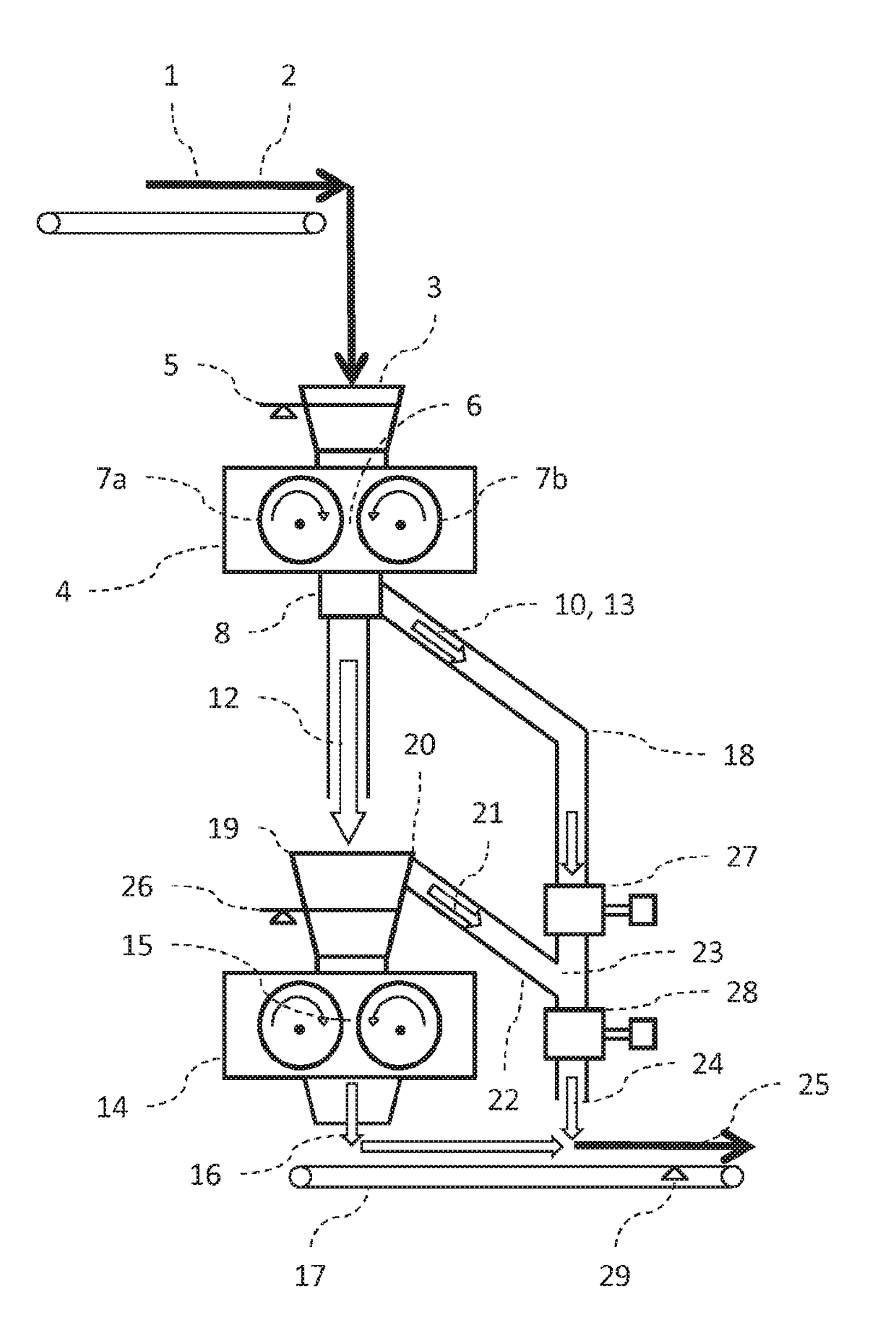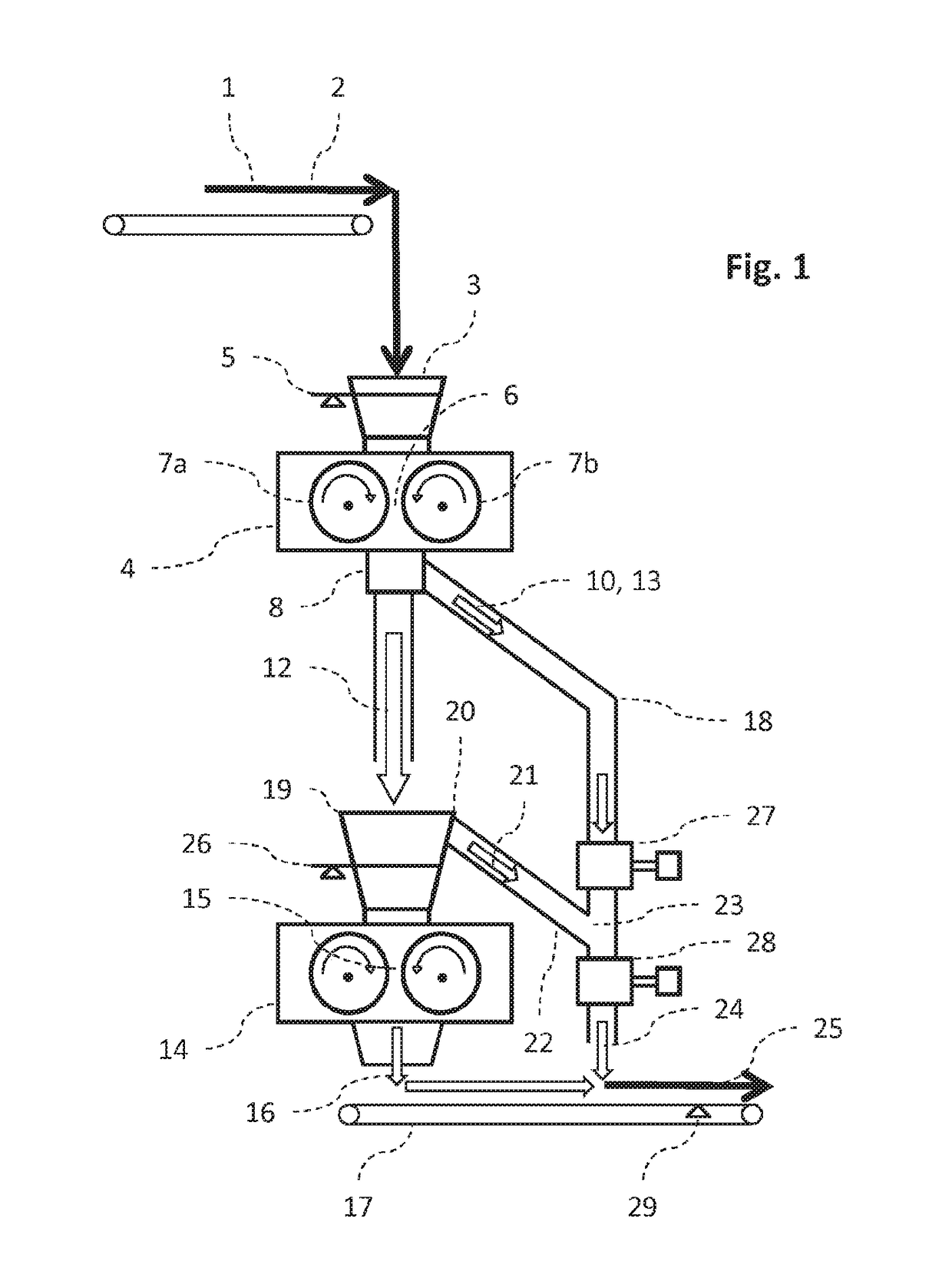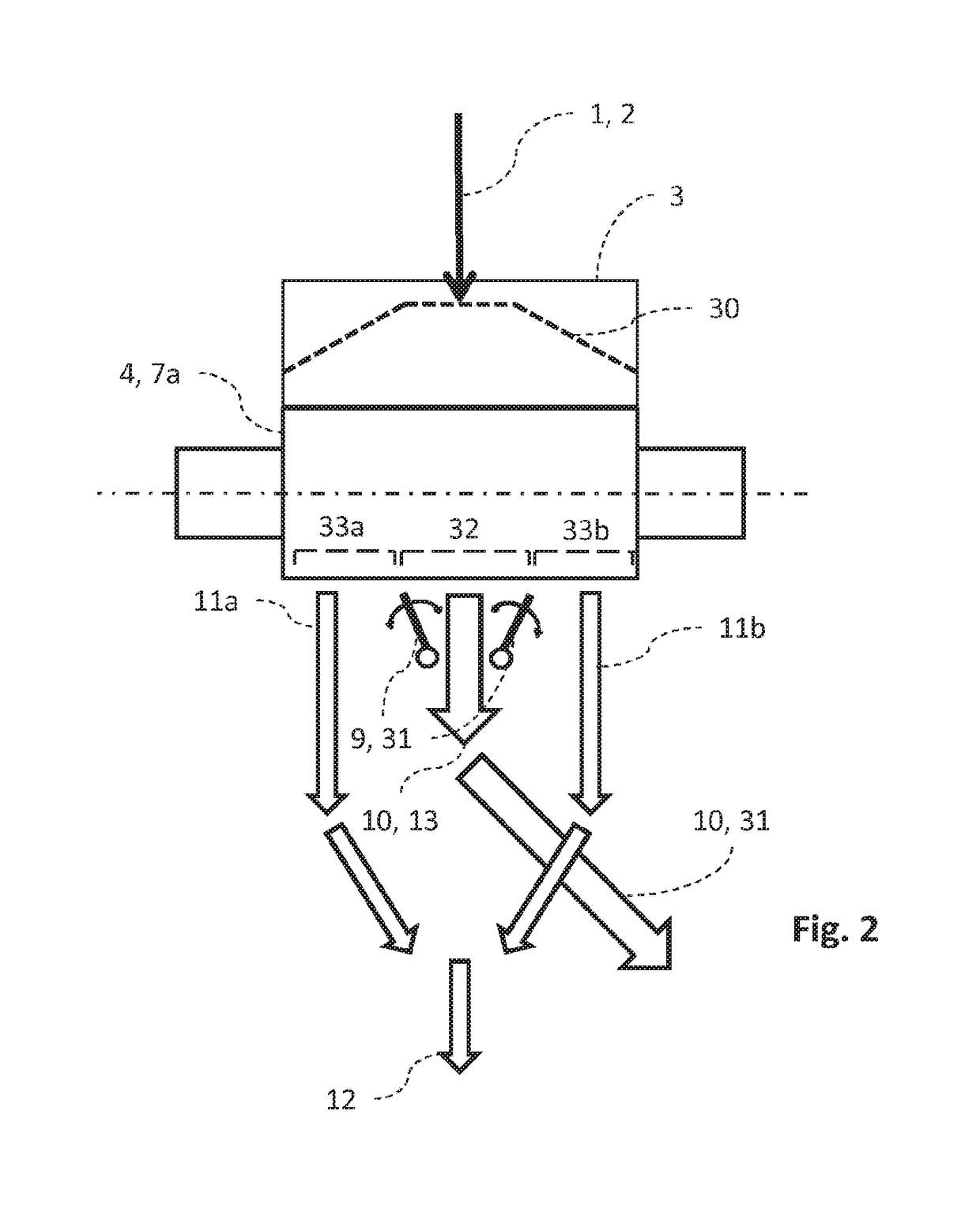Method and apparatus for the two-stage grinding of fresh stock
- Summary
- Abstract
- Description
- Claims
- Application Information
AI Technical Summary
Benefits of technology
Problems solved by technology
Method used
Image
Examples
Embodiment Construction
[0022]An exemplary embodiment of the method according to the invention for grinding granular, brittle fresh stock 1 by way of a corresponding device according to the invention is schematically illustrated in FIG. 1. Fresh stock 1, optionally conjointly with the stock 2 that has been recirculated in a recirculating grinding plant (not completely illustrated), is fed into the stock feeding device 3 of the first roller press 4. In order for the fed quantity to be metered in a suitable manner, the filling level 5 in the stock feeding device 3 is controlled and is regulated in a regulator circuit having the mass flow of the fresh stock 1 to be fed as an actuating variable. The fresh stock 1 (conjointly with recirculated stock 2) is comminuted to ground stock under high pressure in the roller gap 6 between the rollers 7a, 7b of the first roller press 4 and herein is crushed to form flakes. A separator installation 8 is disposed directly below the entire roller gap 6 in the longitudinal ex...
PUM
 Login to View More
Login to View More Abstract
Description
Claims
Application Information
 Login to View More
Login to View More - R&D
- Intellectual Property
- Life Sciences
- Materials
- Tech Scout
- Unparalleled Data Quality
- Higher Quality Content
- 60% Fewer Hallucinations
Browse by: Latest US Patents, China's latest patents, Technical Efficacy Thesaurus, Application Domain, Technology Topic, Popular Technical Reports.
© 2025 PatSnap. All rights reserved.Legal|Privacy policy|Modern Slavery Act Transparency Statement|Sitemap|About US| Contact US: help@patsnap.com



